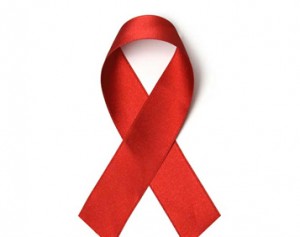HIV prevalence in Hohoe higher than regional prevalence
 The 2019 National HIV Report released by the Ghana AIDS Commission and National AIDS Control Programme shows that Hohoe has an HIV prevalence rate at 1.6 per cent, higher than the Volta Regional prevalence rate of 1.5 per cent.
The 2019 National HIV Report released by the Ghana AIDS Commission and National AIDS Control Programme shows that Hohoe has an HIV prevalence rate at 1.6 per cent, higher than the Volta Regional prevalence rate of 1.5 per cent.
Mr Andrews Teddy Ofori, the Hohoe Municipal Chief Executive (MCE) said “the 1.6 per cent prevalence in our Municipality was not good news and it calls for concerted efforts.”
Mr Ofori who was addressing the first ordinary meeting of the second session of the eighth Hohoe Municipal Assembly called on Assembly Members, traditional authorities, churches, mosque, traders, workers as well as the media to drum home the message of the reality of HIV and AIDS and its impact on productivity and the need to test to know their status, be treated and remain on Anti-Retroviral Treatment (ART) care to ensure effective viral load suppression.
He said although it was a known fact that the HIV and AIDS prevalence was high in the Municipality, the Assembly continued to put in efforts to sensitise and educate the general public on the spread, prevention and avoidance of stigmatisation in respect of HIV.
The MCE revealed that the Municipal Committee of Ghana AIDS Commission had been reconstituted and would be inaugurated to coordinate, manage and monitor activities being undertaken by health institutions and NGOs in relation to counselling and testing to enable the Municipality to realise the “95-95-95 campaign” by the year, 2025.
He noted that various activities in the form of stakeholders’ engagement, Voluntary Counseling and Testing (VCT) were carried out from time to time and urged Assembly Members to avail themselves for testing anytime the health team visited their communities as it would encourage a lot of the citizens to patronise and avail themselves to be tested.
Mr Ofori said in terms of the Persons With Disability (PWD) Fund, a total of 163 PWDs had benefited from the funds in 2020.
He said the Assembly would not relent on its efforts at ensuring that mobilisation of beneficiaries under the Livelihood Empowerment Against Poverty (LEAP) programme covered the entire Municipality.
“During the year under review, 268 qualified households were enrolled onto the E-Zwich platform. Payment of an amount of GH¢ 489,306.00 was made to 1,215 households in 39 communities in the municipality.
“Also, the Municipal Department of Social Welfare facilitated the registration of 5,161 vulnerable persons into the exempt category of the National Health Insurance Scheme.”
Mr Ofori said the Assembly would also continue to spend a large proportion of its revenue on infrastructural projects whilst partnering with other development agencies to realise the objective.
He said some of the projects and their statuses being executed in the Municipality as at the end of the year, 2020 included the construction and completion of a 3-Unit Classroom Block, Staff Common Room, 4-Seater KVIP and Supply of 105 No Furniture at Hohoe Experimental School.
“Construction and completion of a Community-based Health Planning and Services (CHPS) Compound,4-Unit Water Closet toilet and urinal, and extension of electricity supply to the facility at Likpe Koforidua, a 6-units classroom block with other auxiliary facilities at Adabraka Zongo, renovation of COVID-19 Treatment Center at Hohoe and drilling of a borehole at Atabu.”
Mr Ofori said the provision of modern school infrastructure, desks, exercise books, and other forms of interventions to create a congenial atmosphere for teaching and learning would be pursued by the Assembly.
He said the Municipal Education Directorate visited schools within the Municipality to monitor the work output of teachers and the use of capitation grants, adding that, in-service training and workshops were also organised for teachers to build their capacity in core subject teaching in the Municipality.
The MCE noted that the performance of pupils in the 2020 Basic Education and Certificate Examination
“Whilst the overall Municipal performance was 63.1 per cent in 2019, 62.97 per cent in 2018 and 59.42 per cent in 2017, the pass rate declined to 54 per cent in 2020.
“For the past years, the Alavanyo Wudidi St Mary’s JHS has recorded aggregate 37 and above in the BECE. In view of that, I have directed the Education Directorate to intensify supervision over the school and restructure the school management system to give it a new direction.”
He also revealed that the Assembly planned to ensure that the school feeding programme was sustained and extended to other schools, increase enrolment of students in public schools, and supply furniture to all Senior High Schools with the support of the government.
The MCE said the Assembly also intended to build an effective partnership with religious bodies, civic organisations and the private sector in the delivery of quality education, and ensure that children with special needs were assisted by teachers with the requisite skills in differentiated teaching methods.
Mr Ofori also revealed that the Assembly would provide additional classroom blocks for schools in critical need, ensure the completion of all stalled GETFund projects in the Municipality and intensify supervision of schools in 2021.
Source: GNA
